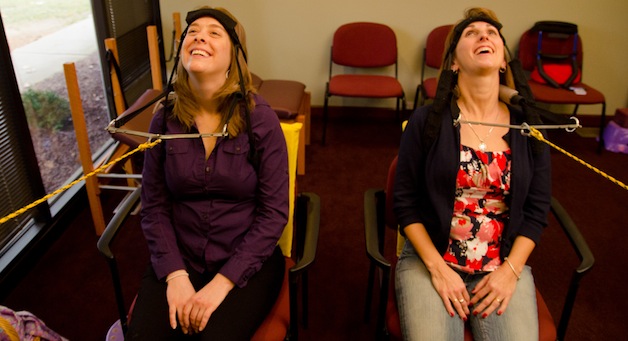What is CBP?

CBP stands for Chiropractic Biophysics. It is the most researched technique in the chiropractic profession and has shown potential to improve chronic pain conditions in several patient populations. CBP technique focuses on optimal posture and spinal alignment as the primary goals of chiropractic care while documenting improvements in pain and functional based outcomes. The uniqueness of CBP treatment is in structural rehabilitation of the spine and posture, which is accomplished with specific traction treatments that retrain muscles and ligaments.
The goals of CBP care are as follows:
- Normal Spinal Alignment
- Normal Spinal Function: including improved range of motion and quality of movement, as well as improved muscle strength
- Ideal Postural Alignment

Treatment Methods
The CBP protocol of care recommends that relief care (pain management) be separated from structural rehabilitation of the spine and posture. In this regard, the typical patient would receive an initial 3 weeks of care (4 times per week or 12 visits) aimed at improving overall spinal range of motion and pain.
After, the initial relief care examination, CBP structural rehabilitation procedures would begin. This includes exercises, adjustments, and traction (referred to as the EAT protocol). Unlike the relief care phase, the EAT corrective care protocol is unique to CBP. This is what makes CBP so different!
The frequency and duration of further care recommended to the patient at the 36 visit re-evaluation depends on their improvement in both structural and functional based outcomes. At that time post x-rays are taken of the patient to compare their new structural alignment to their initial visit. At that time the doctor and patient can discuss continued wellness care to maintain their correction.
The Harrison Spinal Model
The Harrison model theorizes that the spine has an 'ideal' position that allows for full range of motion and complete expression of the nervous system. The Harrison model states that the neck should have a geometric shape that approximates a ‘piece of a circle’ while both the ribcage and low back should have a geometric shapes that approximate an ellipsis.
X-rays
CBP protocols require that the doctor must measure the displacements on spinal radiographs (segmental subluxation). Both lateral-side view and anterior to posterior (AP) or frontal view CBP x-ray line drawing procedures have been studied and found to be reliable. Furthermore, CBP utilizes standardized x-ray positioning procedures that have been studied and found to be reliable. In reality, the only way to see what an individuals spine alignment looks likes is to take an x-ray.
History of Traction
Beginning in 1980, Drs. Don and Glenn Harrison originated several traction methods to restore the sagittal cervical curve. By 2000, Don's son Dr. Deed Harrison had continued his father's work, developing several postural and spinal traction methods to restore thoracic and lumbar curves.
In clinically controlled trials, the CBP technique of extension traction is the only proven method shown to consistently correct abnormal spinal curvatures back towards their normal alignment without surgery.
With the wide range of traction options available, CBP technique is largely customizable and tailored to each patients individual needs.
Any and all descriptive information regarding the CBP technique has been adapted from website for the Chiropractic Biophysics technique, IdealSpine. For more information on the technique and its founder, feel free to visit their website.